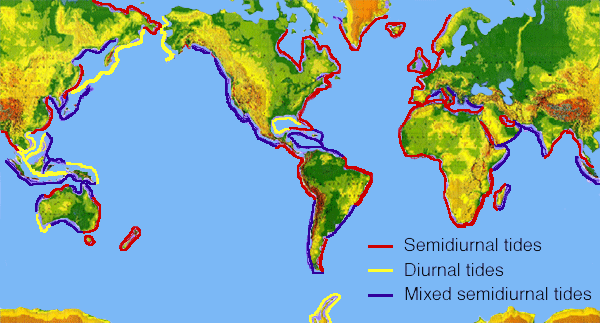 Observations, Empirical Studies and Harmonic Analysis
Observations, Empirical Studies and Harmonic Analysis
-
Tidal potential is the sum of multiple periodic functions -- a composite of 65 different components.
Symbol |
Name |
Period (solar hours) |
Relative Amplitude |
M2 |
Principal lunar semi-diurnal |
12.42 |
100 |
K1 |
Lunar-solar diurnal |
22.93 |
58 |
S2 |
Principal solar semi-diurnal |
12.00 |
47 |
O1 |
Principal lunar diurnal |
25.82 |
42 |
-
The four major harmonics are used to predict the type of tide, according to the ratio F = (O1+K1)/(M2+S2).
F > 3Diurnal0.25 > F > 3MixedF > 0.25Semi-diurnal

Global distribution of tide types (NOAA/NOS)
-
From the harmonic analysis of tide gauge measurements recorded over a long interval, we can identify the major and minor components. In this way, we have been able to accurately predict the tide without an exact understanding of why tides vary between locations.
-
Why are observed amplitudes and phases inconsistent with a simple tidal-potential model?